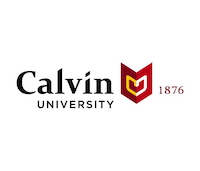Below is a summary of the abstract you submitted. Presenting author(s) is shown in bold.
If any changes need to be made, you can modify the abstract or change the authors.
You can also download a .docx version of this abstract.
If there are any problems, please email Dan at dar78@pitt.edu and he'll take care of them!
This abstract was last modified on April 22, 2015 at 10:47 a.m..

Termites and snails have complex symbiotic gut microbial communities that perform essential functions for the host. Members of the Enterobacteriaceae family have been implicated in several of these functions. The ecology of internal and externally-derived enterobacteriophages and their ability to stabilize or disrupt the gut bacterial community is the focus of our investigation, which hinges on the ability to isolate enterobacteriophages from various soils and geographically and temporally separated termites and snails. We isolated 22 bacteriophages from the termite gut, snail gut, and soil, using three separate snail/termite enterobacterial symbionts as hosts. Several phages appear morphologically similar to myoviridae, but the majority have short, non-contractile tails similar to the podoviridae. Ten were considered “slow-growers” (i.e. taking more than 48 hours to form plaques on isolation media). Of the 22 phages, we obtained complete genome sequence from fourteen. Eleven phage genomes are very similar in length (62,325 to 62,660 bp), associated with podoviridae morphologies, and are <1% detectably similar (discontiguous megablast) to sequenced phages in GenBank. Remarkably, these phages form three very distinct clusters at the nucleotide level (as little as 9% of genome detectably similar), but share genome architecture and pham identification in all but a few genes. The remaining three genomes are associated with myoviridae morphologies. Lily has a genome length of 92,613 bp and no nucleotide similarity to sequenced phages in GenBank. DJasperse and Sava are 178,243 and 178,429 bp, respectively, and have up to 88% average nucleotide identity (ANI) with each other and with two phages from *Cronobacter* and *Citrobacter* hosts. When combined with prior years’ data, we have isolated 32 enterobacteriophages that form ten clusters, most of them novel. Hence, we have isolated a significant amount of previously untapped enterobacteriophage diversity. Two bacteriophages that were isolated from soil were highly similar (>99% ANI) to two from termite guts collected >10 miles away. An intriguing possibility is that these phages represent lysogens from the host bacterium. Further investigations using PCR on bacterial host DNA as well as termite and snail gut DNA are planned and will help resolve this question.


